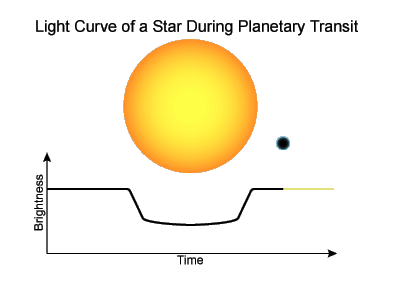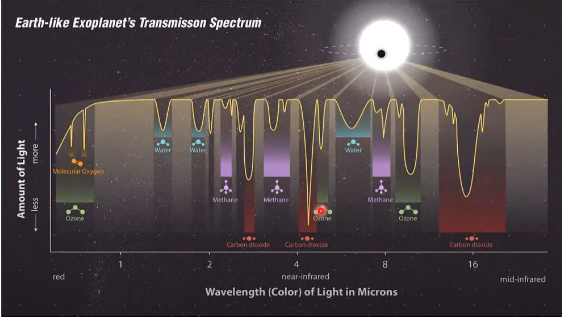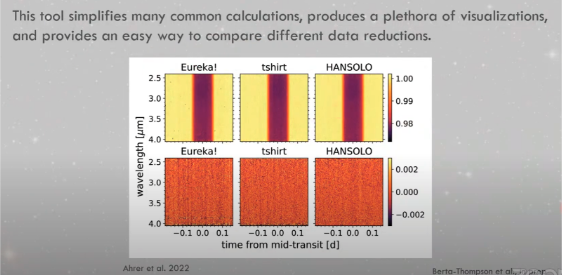Over a year ago, the James Webb Space Telescope (JWST) released its first images to the world, shocking millions with beautiful imagery and detail. The JWST has provided us with an extraordinary view of our cosmos. Opening a door that will bring a wave of new science and discoveries. However, JWST’s purpose is not only to provide jaw-dropping images of our universe but also to help find some of the most elusive and exciting celestial bodies that we know of, exoplanets.
Dr. Catriona Murray’s research focuses on this exact topic. She states, “I was working on trying to find planets as a part of my Ph.D. For my postdoc, I’m now trying to take the planets that we know about and try to find out what is in the atmosphere of those planets.”
Dr. Murray begins her talk by describing how exoplanets are found. These planets are found through something called “The Transit Detection Method.” This method is used when a planet passes in front of its star. As the planet transits, it ends up blocking some of the light of the star and casts a shadow, causing the star’s overall light to dim, which is measurable. Nonetheless, this method can be difficult because not all planets will transit their host star, which causes a large discrepancy.

After having discovered a planet, you can use a method similar to the transit method to determine what is inside its atmosphere. Dr. Murray states, “When the planet passes in front of its star, the light from the star is actually filtered through that planet’s atmosphere.” Due to this, the light that shines through can be split into different wavelengths and turned into a transmission spectrum. “Essentially it tells you the blueprints of what’s in an exoplanets atmosphere,” says Dr. Murray.
Now here is where JWST comes into the picture.
We can use JWST to do this transmission spectroscopy method and look closely at the atmosphere of these exoplanets. JWST uses a variety of tools on board, such as NIRISS, NIRCam, NIRSpec, and NIRSpec PRISM that can help study the atmosphere composition of an exoplanet. Because of how technologically advanced JWST is, it has demonstrated extreme precision and wavelength coverage, aiding the search for terrestrial exoplanets around low-mass stars.

Later in the talk, Dr. Murray discusses her time on the SPECULOOS project, which is the search for habitable planets eclipsing ultra-cool stars.
This is a ground-based transit survey that is looking for planets that are 1700 objects around red-dwarfs, which is a very cool, small star. By using the previously mentioned methods, this project became responsible for the amazing discovery of the TRAPPIST-1 system, a 7-planet system orbiting an ultra-cool dwarf star with 3 planets in its habitable zone. This system is now in the spotlight for study by JWST and is a prime candidate for atmospheric characterization in the era of JWST.
There are major issues that can occur when trying to correctly interpret the exoplanet’s atmospheric spectra. A few examples of these challenges include stellar contamination, which can occur when a planet passes over a sunspot of its host star, causing the light curve to have a bump. Another challenge occurs if an exoplanet has thick clouds which can cause atmospheric transmission spectra to not be accurate.
To help try and solve these challenges Dr. Murray created a chromatic fitting software that takes a holistic approach with aiding in more precise atmospheric spectroscopy. This software helps by making it possible to add filters and simplify JWST data to make it more precise when searching for specific atmospheric elements. This code is available for free and is incredibly beneficial in minimizing major challenges when correctly interpreting exoplanet spectra.

To get a deeper look into Dr. Catriona Murray’s research and where it is heading, you can visit her website at: University of Colorado Boulder: Catriona Murray
To watch the recording of her First Friday presentation visit: YouTube: First Friday Astronomy – July 2023
Article Written by Chandler Beasley, member of the AstroTAC team.